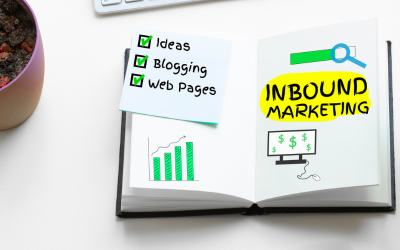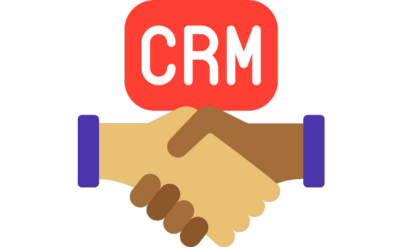Just like every business owner, you are continually searching for innovative ways to reach and engage your target audience. And this has led you to wonder what marketing strategy is least or most effective.
Well, the truth is, traditional outbound marketing tactics, which involve pushing promotional messages out to a broad audience, are gradually giving way to a more personalized and effective approach known as inbound marketing. And in this article, we’ll delve into the world of inbound marketing, exploring its effectiveness, importance, success stories, and even a few disadvantages you might have to consider. By the end, you’ll have a comprehensive understanding of why inbound marketing is the driving force behind business growth in the digital age.
What is Inbound Marketing?
According to HubSpot, Inbound marketing is a business methodology that attracts customers by creating valuable content and experiences tailored to them. While outbound marketing interrupts your audience with content they don’t always want, inbound marketing forms connections they are looking for and solves problems they already have.
Going a step further we should consider a definition by Salesforce, Inbound marketing is a strategic approach to creating valuable content that aligns with the needs of your target audiences and inspires long-term customer relationships.
However, here is the simplest definition that sums it up for me, Inbound marketing refers to marketing campaigns where engagement with the brand is initiated by the consumer.
Simply stated without all the professional jargon, Inbound marketing is just like making friends. You don’t go out telling them about your qualities first. Instead, you show genuine interest in them as a person, and learn about their hobbies, interests, qualities and even problems. This is not only a good start to winning new friends, but also a good start to winning new customers. That very act is Inbound marketing.
Imagine you’re at a neighborhood gathering or a party, and you meet new people. Instead of immediately telling them about your business or trying to sell them something, you start by showing a genuine interest in their hobbies, problems, and interests.
For instance, you meet someone who loves gardening. Instead of talking about your gardening products right away, you ask questions like, “What’s your favorite plant to grow?” or “Do you have any tips for keeping plants healthy?” This builds a connection because you’re genuinely interested in what they have to say.
So, this is all about creating these valuable connections and relationships with your audience by offering solutions to their problems and answering their questions. It’s a friendly, helpful approach that can lead to long-lasting customer relationships and business growth. Just like making friends, it takes time and effort, but the trust and loyalty you build are well worth it in the end.

Does Inbound Marketing Really Work?
One of the most common questions about inbound marketing is whether it truly delivers results. The resounding answer is …yes! This marketing strategy has proven to be highly effective for different businesses across industries.
This works by attracting potential customers through valuable content and experiences tailored to their needs and interests. It includes techniques like content marketing, search engine optimization (SEO), social media marketing, and email marketing, among others. By creating content that addresses specific pain points or interests of your target audience, you naturally draw them to your brand.
Let’s continue from our previous example, suppose you run a gardening supply store. By publishing blog posts about seasonal gardening tips, creating how-to videos on planting techniques, and sharing engaging content on social media, you not only position yourself as an authority in the gardening niche but also attract individuals actively seeking gardening solutions. This inbound approach builds trust and credibility, making potential customers more likely to choose your products or services when the need arises.
How Important Is Inbound Marketing?
Inbound marketing isn’t just important; it’s essential in today’s digital landscape. Here are some of the qualities that makes it so:
1. Customer-Centric Approach: Inbound marketing centers around the customer’s needs and preferences. It’s about building relationships and providing value, rather than interrupting with unsolicited messages. This customer-centricity aligns perfectly with the way modern consumers want to engage with brands.
2. Cost-Effective: In comparison to traditional outbound marketing, inbound marketing is often more cost-effective. Creating valuable content and optimizing it for search engines can generate organic traffic over time, reducing the need for expensive advertising campaigns.
3. Measurable Results: Inbound marketing allows for precise tracking and measurement of results. With the right analytics tools, you can see which content resonates most with your audience, which channels are driving traffic, and how leads progress through your sales funnel.
4. Long-Term Benefits: Unlike outbound marketing, which stops generating results when you stop spending, inbound marketing can have long-lasting effects. Valuable content continues to attract and engage visitors long after it’s published.
ALSO READ: How to Create Compelling Copy for Your Website
How Successful Is Inbound Marketing?
The success of inbound marketing is not a matter of chance; it’s a result of strategy, consistency, and dedication. Many businesses have achieved remarkable success through inbound marketing strategy. Here are a few notable examples:
1. HubSpot: HubSpot, a leading sales software company, that practices what it preaches. Their inbound marketing strategy is mostly done through content marketing, SEO, and a commitment to educating its audience. And with that, HubSpot has become a go-to resource for marketers and businesses worldwide.
2. Buffer: Buffer, a social media management platform, has built a massive following and customer base by providing valuable content about social media marketing. Their blog and transparency about company culture have not only helped them stand out, but also make them a number one choice for a large number of people.
3. Zendesk: Zendesk, a customer service software provider, uses inbound marketing to educate its audience on customer support best practices. Their content addresses common pain points, making them a trusted resource in their industry.
What’s the lesson?
These companies showcase the potential for inbound marketing to drive business growth. By consistently providing value and nurturing leads, they have built loyal customer bases and thriving businesses.
ALSO READ: Top 10 Best CRM Software Options Plus 11 Genius Ways to Discover the Best One for You

What Are 3 Disadvantages of Inbound Marketing?
While inbound offers numerous advantages, it’s essential to acknowledge its potential disadvantages, which not everyone can bare:
1. It is time-intensive: Inbound marketing strategies, like content creation and SEO, can be time-consuming. It often takes time to see significant results from these efforts.
2. It is highly competitive: Inbound has become increasingly competitive as more businesses adopt the approach. Standing out requires exceptional content and a deep understanding of your target audience.
3. It requires expertise: Effective inbound marketing demands expertise in various areas, from content creation to SEO to social media management. Small businesses with limited resources may find it challenging to manage all aspects effectively.
If you’d like to know more about how inbound marketing has changed over the last couple of years, click here.
At this point is where most people prefer to go down the outbound marketing route. How this doesn’t dispute the fact that Inbound marketing is a powerful strategy that really works. It’s vital for modern businesses, as it aligns with consumer preferences, is cost-effective, offers measurable results, and provides long-term benefits. I’ve always pointed to success stories like that of HubSpot HubSpot, Buffer, and Zendesk (among many others) to explain its potential. When executed well, inbound marketing can be a game-changer for business growth in the digital age.
Related: While you brand, would you be interested in a writing job while you aim to your success?





